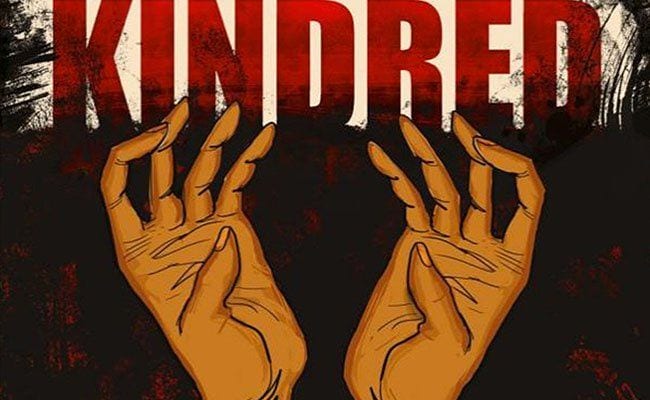
Many historians consider slavery to be America’s original sin, the shame that was present at our nation’s founding, persisted in one form or another through much of our history, and still exerts significant force on our society today. Authors have grapple with this heritage in various ways, one of the most impressive being that of Octavia E. Butler’s 1979 novel Kindred, now available in a graphic novel adaptation by Damian Duffy and John Jennings. If you’ve never read any of Butler’s works, Kindred is a good place to start, and if you’ve read them all, you may find something new to appreciate in this adaptation of one of her most popular novels.
The protagonist in Kindred is Dana, a young black woman living in California with her white husband, Kevin. It’s 1976 and they’re very much in love with each other and delighted to be moving into their first house. Both are writers (they met while doing pay-the-bills grunt work for a temp agency) with the dual desires to express themselves and to earn a comfortable living, and both are looking forward to a future that will be even better than their present circumstances.
Then, unexpectedly, Dana is struck with an attack of dizziness. She awakes to find herself by the banks of a river, while a drowning young white boy cries out for help. She pulls him out of the water and administers artificial respiration, saving his life, only to find herself abruptly back in her California home. Her clothes are wet and muddy, so it hadn’t been a dream, but what had it been? Both she and Kevin are confused and worried, and it causes a rift between them — neither can understand what has happened, and she feels that he’s trying to force closure on something she hasn’t had time to process.
The dizziness recurs, and Dana time travels once again, this time to save a somewhat older version of the same boy from a fire. She learns that his name is Rufus Weylin, and that the place and time to which she keeps traveling is a plantation in Maryland, decades before the Civil War. In Rufus’ world, most black people are slaves and thus the property of their owners, and even a free black person risks being forced back into slavery. Like most Americans, Dana knows something about slavery from her history classes, but abstract knowledge is one thing and concrete experience is another. Now she finds herself living in a time and place where her skin color places her in the class of people who can be flogged, raped, sold, even killed, on the whim of a white person.
Over the course of the novel, Dana will make many trips between the ’70s and the early 19th century, witnessing much abuse of the slaves and experiencing some of it herself. Equally important, she will travel between a world where she takes it for granted that she can make her own choices and direct her own life, and one in which such aspirations would mark her as trying to be “white” and thus threatening the existing power structure.
If you were in Dana’s place, what would you do? My first thought is that I’d take a lot of modern weapons back with me to enact a Tarentino-esque revenge fantasy against Rufus, his family, and as many of their white neighbors as I could manage. But Dana can’t indulge such desires for retribution, because Rufus will grow up to inherit the plantation and father one of Dana’s ancestors (the mother is one of his slaves). It’s the kind of conundrum you often find in time-travel stories: If Dana kills Rufus, she also kills off his line, and thus herself. She also must be concerned with other consequences of her actions; for instance, if she kills Rufus, his slaves will simply be sold to someone else, who may treat them even worse than he does. So she can’t indulge in absolutist thinking, but must try to figure out how to survive and help others in a situation completely outside her previous experience.
Kindred is an important novel, and anything that can bring more readers to it (and to Butler’s work in general) can only be a good thing. However, this adaptation doesn’t entirely succeed in capturing the spirit of the original novel, with the art being particularly problematic. John Jennings’ semi-realistic drawing style can edge into jokiness at inappropriate moments, and his fondness for incorporating action lines and made-up sound words (KLOK! CHOOM!) into the frames seem more appropriate to a manga for teenage readers than a novel taking on the serious issues that Kindred does.
On the plus side, each chapter is introduced with a beautiful two-page spread, a woodcut-like design combining generous amounts of pure black with a vivid color scheme. These compositions make it clear that Jennings has an excellent sense of design, even if figure drawing is not his strong point.
This edition of Kindred includes an introduction by Nigerian-American author and professor Nnedi Okorafor, in which she expresses her appreciation of Butler’s work and the importance of having diverse voices within the sci-fi community.

